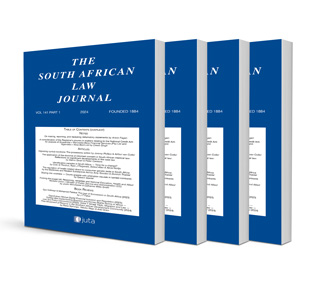Notes: Lost Wills and Section 2(3) of the Wills Act

Notes: Lost Wills and Section 2(3) of the Wills Act
Authors Michael Cameron Wood-Bodley
ISSN: 1996-2177
Affiliations: Senior Lecturer in Law, University of KwaZulu-Natal
Source: South African Law Journal, Volume 132 Issue 4, 2015, p. 734 – 747
Abstract
None